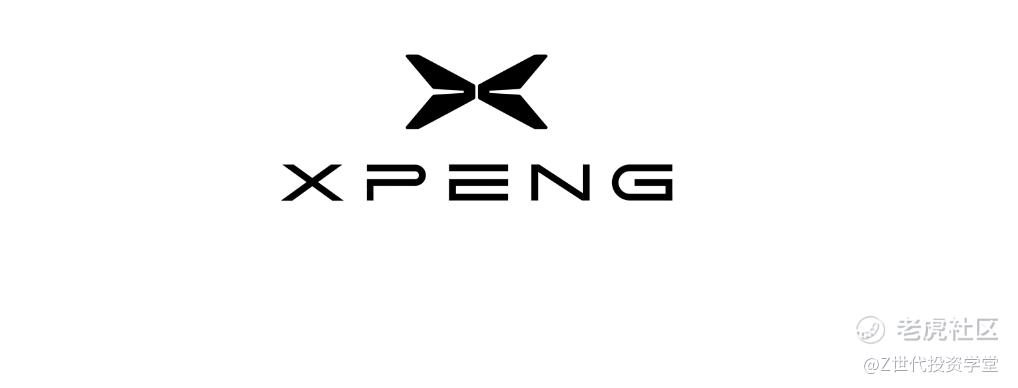Initial Report(part3): XPeng (NYSE) , 42% 5-yr Potential Upside (EIP, Weilong TANG)
In the event of accidents associated with the company's ADAS systems, it could face potential liabilities, government scrutiny, and increased regulatory oversight. Moreover, accidents or defects arising from third-party ADAS technology may negatively impact public perception and result in regulatory restrictions on ADAS technology.
Additionally, regulatory restrictions pose a potential threat to the company's ADAS technologies. For instance, its research and development activities related to ADAS are subject to regulatory constraints on surveying and mapping, as well as driverless road testing. Any tightening of these regulatory restrictions could have a material adverse impact on the development of the company's ADAS technology.
Politics In China threatens XPeng’s attractiveness to investors
The company's business, financial condition, and operational results may be materially and adversely affected by changes and developments in the political and economic policies of the People's Republic of China (PRC) government. Such changes could impede the company's ability to sustain its growth and expansion strategies. If the company fails to comply with applicable PRC laws, regulations, or regulatory requirements, the Chinese government may intervene or exert influence over its operations. Additionally, the government may enhance control over offerings conducted overseas and foreign investment in China-based issuers, leading to significant alterations in the company's operations and the value of its Class A ordinary shares and ADSs.
Any actions taken by the Chinese government to increase oversight and control over overseas offerings and foreign investment in China-based issuers could severely limit or completely hinder the company's ability to offer or continue offering its Class A ordinary shares and ADSs to investors. This, in turn, may result in a substantial decline or complete devaluation of the securities' valu
Mitigation
Diversification of R&D Efforts is key
To mitigate the risk of potential R&D failures, the company can implement a diversified approach to research and development strategies. This involves not solely relying on in-house efforts but also fostering collaboration with external partners, research institutions, or technology specialists. By diversifying R&D sources, the company can tap into a broader pool of expertise and perspectives, reducing the inherent uncertainty associated with achieving breakthroughs.
Furthermore, establishing strategic partnerships with technology suppliers and industry leaders can enhance the company's access to cutting-edge technologies. Collaborating with trusted suppliers for critical components like battery cells and semiconductors ensures a more reliable supply chain, reducing vulnerabilities related to technological dependencies.
Additionally, the company can explore joint ventures or research alliances to share the burden of R&D expenses and leverage collective expertise. This collaborative approach not only spreads the risk but also facilitates a more dynamic response to the evolving technological landscape.
By adopting a diversified and collaborative R&D strategy, the company can enhance its resilience to potential setbacks, stay abreast of the latest technological developments, and maintain a competitive edge in the rapidly evolving electric vehicle industry.
Comprehensive Testing of ADAS Technology
To address the challenges associated with the nascent nature of ADAS technology, the company can implement a comprehensive testing regimen. This involves rigorous testing protocols to identify and rectify potential issues in ADAS systems before they are integrated into Smart EVs.
Thorough testing not only ensures the safety and reliability of the technology but also helps in addressing any concerns promptly, reducing the risk of accidents and associated liabilities.
In parallel, the company can establish continuous training programs for both its technical staff and end-users. Training programs can enhance the proficiency of drivers in utilizing ADAS features, thereby reducing the likelihood of accidents caused by unfamiliarity with the technology. Additionally, ongoing training for the technical team can keep them abreast of the latest advancements and best practices in ADAS development, contributing to the timely resolution of any emerging issues.
Furthermore, proactive engagement with regulatory bodies and participation in industry forums can facilitate a collaborative approach to address concerns related to ADAS technologies. By actively contributing to the development of industry standards and regulations, the company can influence the regulatory environment and shape guidelines that align with safety and innovation.
By focusing on comprehensive testing, continuous training initiatives, and proactive engagement with regulators, the company can mitigate the risks associated with the nascent nature of ADAS technology, ensuring the safe and effective integration of these technologies into its Smart EVs.
ESG
Grid Integration for Sustainability is an ESG Concern:
XPeng's approach to grid integration stands is a paramount ESG concern, showcasing a proactive strategy to address the environmental impact of electric vehicle (EV) charging. Emanating from a commitment to Environmental, Social, and Governance (ESG) principles, grid integration denotes the harmonious assimilation of EV charging infrastructure with the existing power grid—a critical aspect of XPeng's sustainability efforts. There are several areas of concern that need to be addressed. I underline some of them below:
Holistic Energy Ecosystem:
Recognized as a fundamental ESG concern, grid integration underscores XPeng's commitment to fostering a holistic energy ecosystem. This interconnected approach aligns with environmental principles, emphasizing a concerted effort to optimize energy systems for sustainable practices.
Responsive Charging Practices:
At the core of ESG considerations, grid integration facilitates demand-responsive charging practices. XPeng's dedication to this aspect signals an alignment with environmental and social responsibility, showcasing an adaptive approach that minimizes environmental impact and contributes to responsible energy consumption.
Resilience and Reliability in ESG Context:
Within the framework of ESG, grid integration is pivotal for ensuring the resilience and reliability of the energy infrastructure. XPeng's emphasis on this ESG concern signifies a commitment to environmental and governance principles, acknowledging the importance of a robust grid to sustain reliable and environmentally responsible EV charging.
Optimizing Energy Utilization for ESG Impact:
Addressing ESG concerns, grid integration enables XPeng to optimize energy utilization across the network. This optimization aligns with the environmental and governance facets of ESG, reflecting a commitment to minimizing waste, reducing energy loss, and contributing to a sustainable energy ecosystem.
ESG Aligned with Renewable Energy Integration:
Recognized as a crucial ESG concern, grid integration serves as a platform for seamlessly integrating renewable energy sources. XPeng's commitment to this ESG-aligned approach actively participates in reducing the carbon footprint associated with EV charging, contributing to the broader goal of sustainable energy practices.
Data Leaks Could Raise Doubts on Privacy Concerns:
XPeng places paramount importance on customer data protection, implementing stringent measures to safeguard user information. The company adheres to clear purposes for data collection, ensuring that only essential information is gathered with the informed consent of users. Robust encryption protocols and access controls are in place to guarantee the confidentiality and integrity of customer data. XPeng employs anonymization and pseudonymization techniques to protect user identities, minimizing data collection to necessary information for personalized services. The company is committed to compliance with data protection laws, including GDPR, and provides transparent user dashboards for data visibility and control. In the event of a data breach, XPeng has established a comprehensive incident response plan and notification procedures to promptly and transparently communicate with users. With a strong emphasis on employee training and fostering a culture of privacy, XPeng ensures a secure and privacy-centric environment for customer data protection.
Conclusion
XPeng presents a compelling investment opportunity, positioned as a strong buy with a promising trajectory in the electric vehicle (EV) sector. We project a robust upside potential, forecasting a 3-year target price of 18.564, reflecting a 36% increase from the current share price of 13.65. Looking ahead to a 5-year horizon, the target price further elevates to 19.383, signaling a 42% upside.
This optimistic outlook is grounded in the growing enthusiasm surrounding electrification, particularly in China. The nation has dominated the EV world since the 1980s, and continues to play a dominant role in shaping the future of sustainable mobility.
Against this backdrop, XPeng's strategic positioning within this burgeoning market, coupled with its innovative approach and commitment to cutting-edge technologies, underscores its potential for sustained growth and investor returns.
*Do note that all of this is for information only and should not be taken as investment advice. If you should choose to invest in any of the stocks, you do so at your own risk.
如果你想了解有哪些前沿科技的投资机会,想学习真投资大佬们的投资秘籍,想投资自己的人生,那就快来购买《大赢家》漫画吧!漫画中采访了许多职业投资人和上市企业,通过有趣的故事传达投资理念,我们相信在阅读的过程,你一定会有所收获。https://product.dangdang.com/29564921.html#ddclick_reco_reco_relate
免责声明:上述内容仅代表发帖人个人观点,不构成本平台的任何投资建议。





